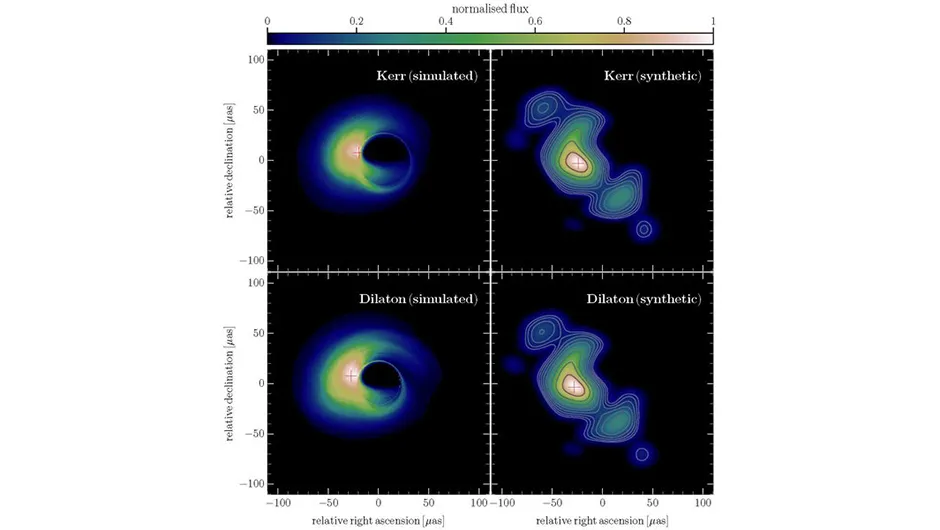How can you tell one kind of black hole from another?With difficulty it seems, according to the results of a recent simulation from a team of astronomers.
The group, working as part of the BlackHoleCam project, emulated the images that they expect the Event Horizon Telescope to produce, which attempted to image the shadow of the black hole at the centre of the Milky Way, Sagittarius A*, in 2017.
It was hoped the images could be used as a test of Einstein’s relativity, as if another kind of gravity were in effect, the size and shape of the shadow would be different.
“While we believe general relativity is correct, as scientists we need to be open-minded,” says says Luciano Rezzola, an astronomer from Goethe University.
The BlackHoleCam collaboration simulated the shadows that would be created by a Kerr black hole (which is our best model of a black hole, that follows Einstein’s laws) and a non-rotating dilation black hole (another model that would follow an alternative theortical form of gravity that could describe our Universe).

They then added the distortions due to the interstellar medium and the limits of the telescope setup that are expected to affect the real observations and found that the resulting images were nearly identical.
“Our results show that there are theories of gravity in which black holes can masquerade as Einsteinian, so new techniques of analysing EHT data may be needed to tell them apart,” says Rezzola.
“Luckily, future observations and more advanced techniques will eventually settle these doubts.”
Until now, black holes have only ever been directly detected by gravitational wave experiment LIGO.
All electromagnetic observations so far have been indirect, studying the material around a black hole rather than the object itself.
The EHT project is attempting to change this by joining together eight radio telescopes around the world to create a virtual telescope with a ‘dish’ the size of Earth, which imaged Sag A* in June 2017.
The project produced so much data, the team are still processing it to create the image.
Though black holes do not emit any light themselves, or allow any light that ventures to near to escape, they photons that just miss it are strongly deflected, creating a ‘shadow’ surrounded by a distinctive ring of light.
“There is little doubt that the EHT will eventually obtain strong evidence of a black hole shadow.
These results encourage us to refine our techniques beyond the current state of the art and thus make an even sharper image,” says Michael Kramer, director of the Max Planck Institute for Radio Astronomy in Bonn.

